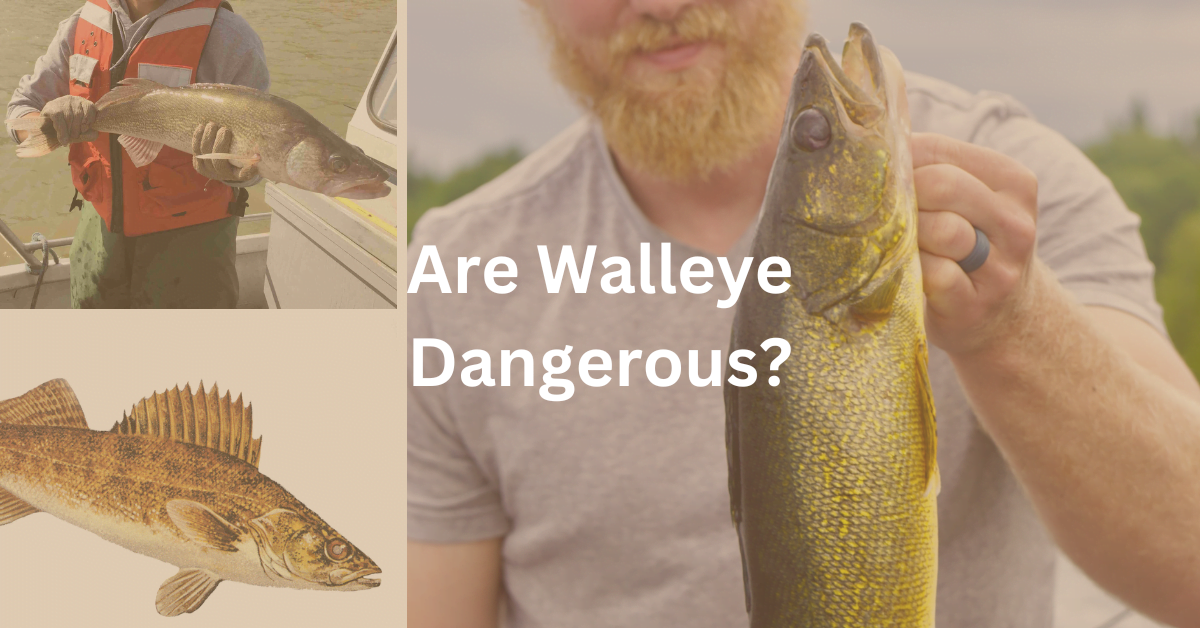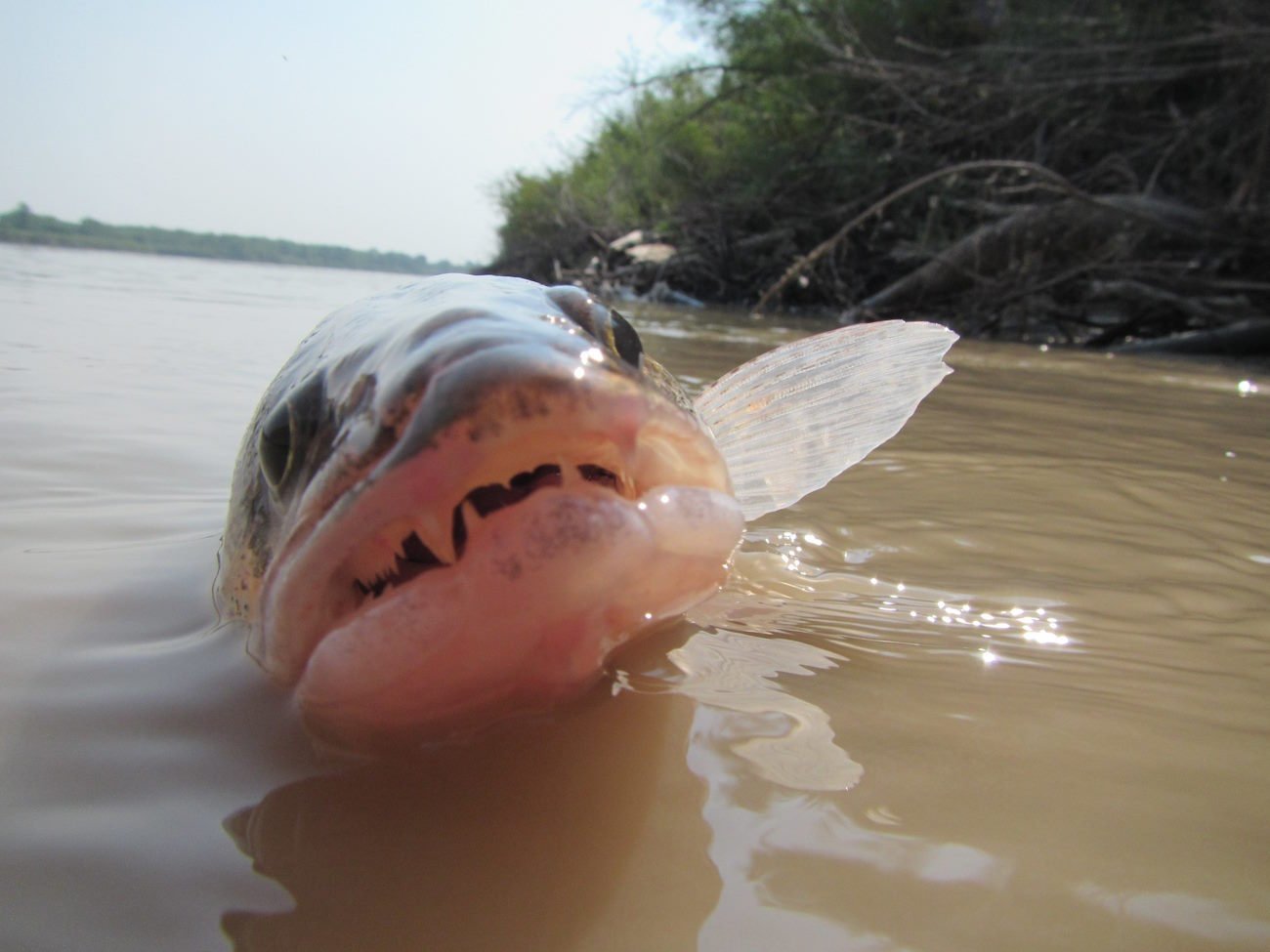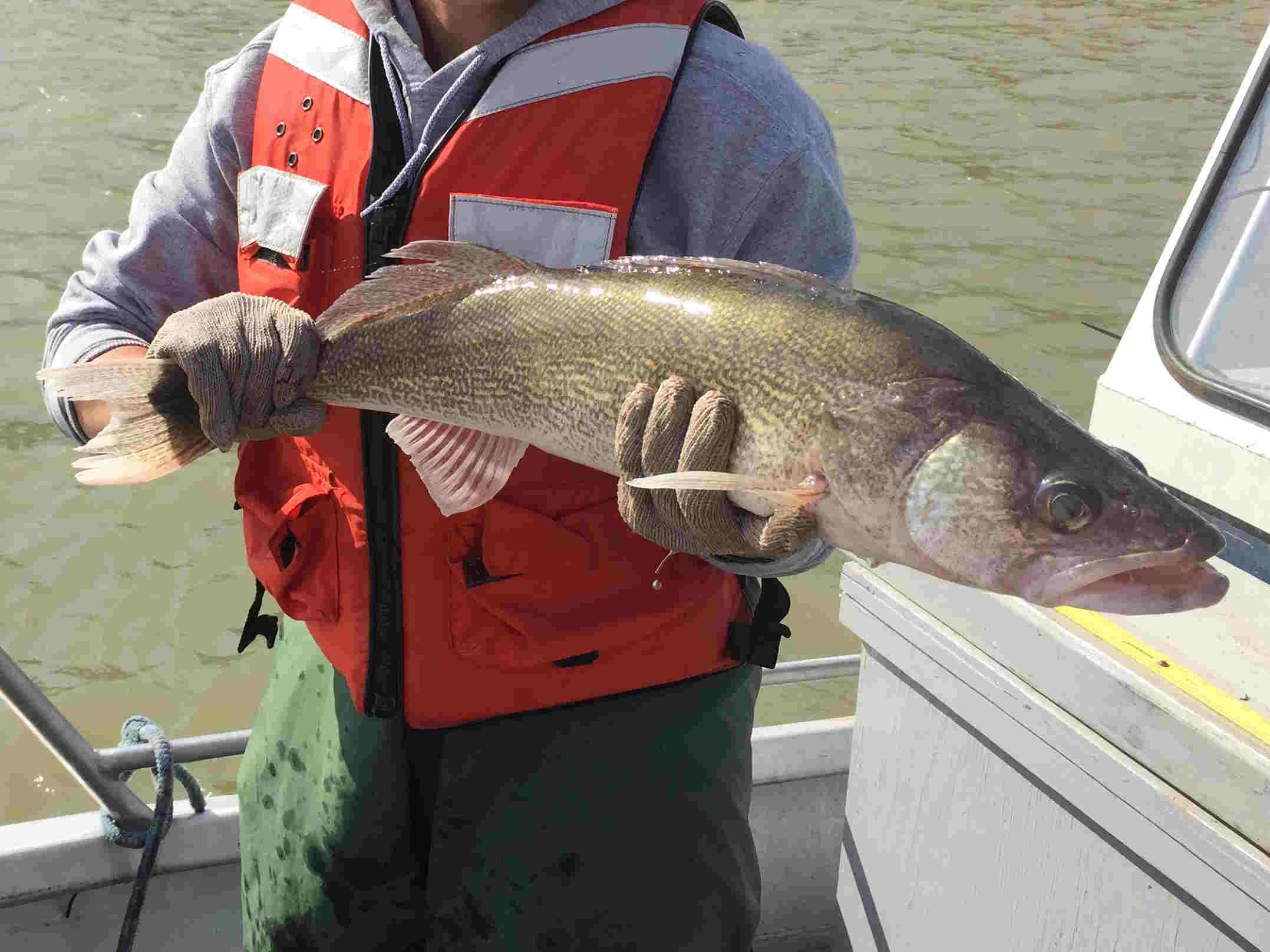One look at those snarly teeth and you might have the question rise up in your mind, “Are Walleye Dangerous?” You might wonder if it is safe to swim in waters with walleye nearby, or if they can injure you when handling them. In this article, we aim to shed light on the topic and provide valuable insights based on facts and expert advice. We’ll explore various aspects, including their behavior towards humans, the potential dangers of handling walleye, and considerations when consuming them. So, let’s dive in and uncover the truth about the perceived dangers surrounding these fascinating fish.

Do Walleye Bite Humans?
Walleye, a popular freshwater fish species, are generally not aggressive towards humans. There have been no documented instances of walleye attacking humans. However, it is important to exercise caution when handling these fish, especially near their mouths.
Walleye possess sharp teeth, which can cause injury if a person’s hands come into contact with them. While walleye are not known to intentionally bite humans, incidents may occur when handling the fish, such as during the process of unhooking them. It is during these interactions that inadvertent injuries can happen due to the fish’s sharp teeth.

It is advisable to handle walleye with care and use appropriate tools, such as fish grips or pliers, to safely unhook them. By taking precautions and being mindful of their teeth, the risk of injury while handling walleye can be minimized.
Remember, walleye’s sharp teeth are primarily adapted for capturing and consuming their natural prey, such as smaller fish and invertebrates. Their teeth are not specifically designed to harm humans, but accidental contact can result in injury.
Dangers of Handling Walleye
When it comes to handling walleye, there are a few potential hazards that individuals should be aware of. While walleye are generally not aggressive towards humans, their anatomy presents some risks if not handled with care.
Firstly, as mentioned earlier, walleye have sharp teeth that can cause injuries if a person’s hands or fingers come into contact with them. It is crucial to exercise caution when unhooking or handling these fish to avoid accidental bites. Proper tools, like fish grips or pliers, can be used to safely handle walleye and minimize the risk of injury from their teeth.

In addition to their teeth, walleye also possess sharp spines on their dorsal fins, which are located along their backs. These dorsal fin spines can cause injury if they penetrate the skin. It is important to be mindful of this when handling or releasing a walleye. A careless grip or improper handling technique can result in accidental contact with these spines, leading to painful puncture wounds.
Furthermore, it’s worth noting that injuries caused by walleye teeth or dorsal fin spines can potentially become infected if not treated properly. Like any puncture wound, these injuries have the potential to introduce bacteria into the body, increasing the risk of infection. Prompt cleaning and appropriate medical attention should be sought if an injury occurs during the handling of walleye.
Are Walleye Dangerous to Eat?
Eating fish, including walleye, is generally recommended as part of a healthy and balanced diet. Fish are excellent sources of essential nutrients, including high-quality protein, omega-3 fatty acids, vitamins, and minerals. Incorporating fish into your diet can offer numerous health benefits, such as supporting heart health, brain function, and overall well-being.

However, it is important to be aware that certain predatory fish, like walleye, may have higher levels of pollutants in their flesh. These pollutants can include substances such as mercury and PFAS (per- and polyfluoroalkyl substances). Mercury enters water bodies through various industrial and natural processes, while PFAS are synthetic compounds used in various consumer products.
These pollutants tend to accumulate in the bodies of predatory fish over time, as they consume other smaller fish that may contain trace amounts of these substances. While the levels of pollutants in walleye can vary depending on the specific location and conditions where they are caught, it is generally advised to consume them in moderation.
Organizations such as the Wisconsin Department of Natural Resources (DNR) provide guidelines for the consumption of walleye, taking into consideration the potential risks associated with these pollutants. For instance, the Wisconsin DNR suggests that women under the age of 50 and children under the age of 15 limit their consumption to one serving of walleye per month. On the other hand, women over the age of 50 and men are advised to limit their intake to one serving per week.
These guidelines aim to strike a balance between reaping the nutritional benefits of walleye while minimizing the potential exposure to pollutants. By following these recommendations and practicing moderation, individuals can continue to enjoy walleye as part of a varied and nutritious diet.
Summary
- Walleye are not aggressive towards humans, but caution should be exercised when handling them near their mouths due to their sharp teeth.
- Injuries can occur if individuals come into contact with walleye’s teeth or dorsal fin spines, and these injuries should be treated promptly to prevent infection.
- Eating fish, including walleye, is recommended for a healthy diet due to their nutritional benefits.
- Predatory fish like walleye may have higher levels of pollutants such as mercury and PFAS in their flesh.
- It is advised to consume walleye in moderation and follow consumption guidelines provided by reputable organizations to minimize potential risks associated with pollutants.
Frequently Asked Questions
No, walleye are not considered dangerous to swimmers. They are not known to attack or pose a threat to humans in the water. However, it’s always a good idea to exercise caution and be aware of your surroundings when swimming in any natural body of water.
While walleye bites or injuries caused by their teeth or dorsal fin spines can break the skin and potentially introduce bacteria, it’s relatively rare for these injuries to lead to infections. However, it’s still important to clean the wound thoroughly and seek medical attention if necessary to prevent any potential complications.
To handle walleye safely, it is recommended to use appropriate tools such as fish grips or pliers to minimize the risk of accidental bites or puncture wounds. When unhooking a walleye, maintain a firm grip on the fish while being mindful of their sharp teeth and dorsal fin spines. Taking these precautions and using proper handling techniques can help ensure a safe and enjoyable walleye fishing experience.
